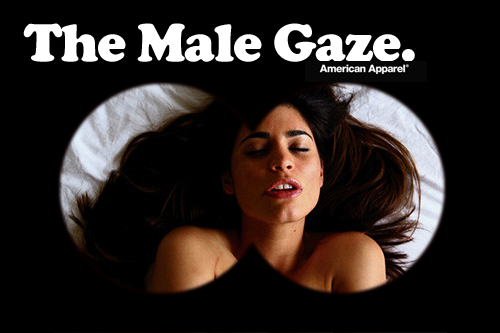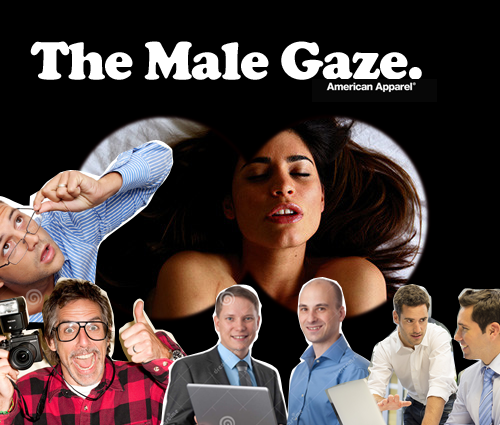
“Tights.” was part of American Apparel’s 2007 ad campaign, launched among a handful of other provocative photos of models posing seductively—often in little to no clothing. Many consumers went up in arms that the clothing company was sexually objectifying women. Unfortunately, this wasn’t the first or last of American Apparel’s controversies. A simple Google search reveals just how problematic the retailer can be. From their over-sexualized advertising to the multiple sexual-harassment lawsuits against the company’s CEO, Dov Charney. American Apparel’s adverts frequently depict women in “vulnerable” poses: posing half-naked, completely nude apart from wearing American Apparel socks, or of women passed out on beds. The company has also come under fire for using seemingly underage girls in sexually exploitive “voyeuristic” positions for their ads. One of these ads were criticized by the Advertising Standards Authority and subsequently banned in the UK.
As an advert, “Tights.” is supposedly selling hosiery. In American Apparel’s defence, we do see the tights they’re advertising on the right. But on the left, they’re clearly advertising something else: sex. In the photo, the model appears to be mid-climax, creating an erotic imagery, taking away from the product the brand is initially advertising. “Tights.” had many asking if American Apparel was selling tights or porn. This “sex sells” ploy to grab consumer’s attention through female subjugation continues to persevere in the advertising industry through means of the male gaze. Laura Mulvey, a feminist film theorist, explained the concept of “male gaze” as women being used for visual pleasure and looked at as objects. Through the eyes of the male gaze—typically a heterosexual male—women were sexualized for the viewing pleasure of men. Themes of objectifying young girls are prevalent in American Apparel ads, many of their adverts excluding the model’s faces, essentially reducing their identity to just sexy female body parts used for the purpose of an erotic impact.
In New York City, one of American Apparel’s billboards depicting a woman wearing only tights with her legs spread was vandalized with the spray-painted words: “Gee, I wonder why women get raped.” In itself the statement is problematic as it blames sexual violence on the way women dress. However, this social commentary made me question whether American Apparel’s ads should be celebrated for capturing girls expressing their sexuality, or condemned for capitalizing on that very sexual expression, fundamentally taking advantage of them. While it’s important to encourage women’s sexuality, I believe American Apparel takes advantage of women by intentionally picturing them in sexually vulnerable pornographic poses. Representing a specific form of sexism through the male gaze that continues to objectify women in media today.

